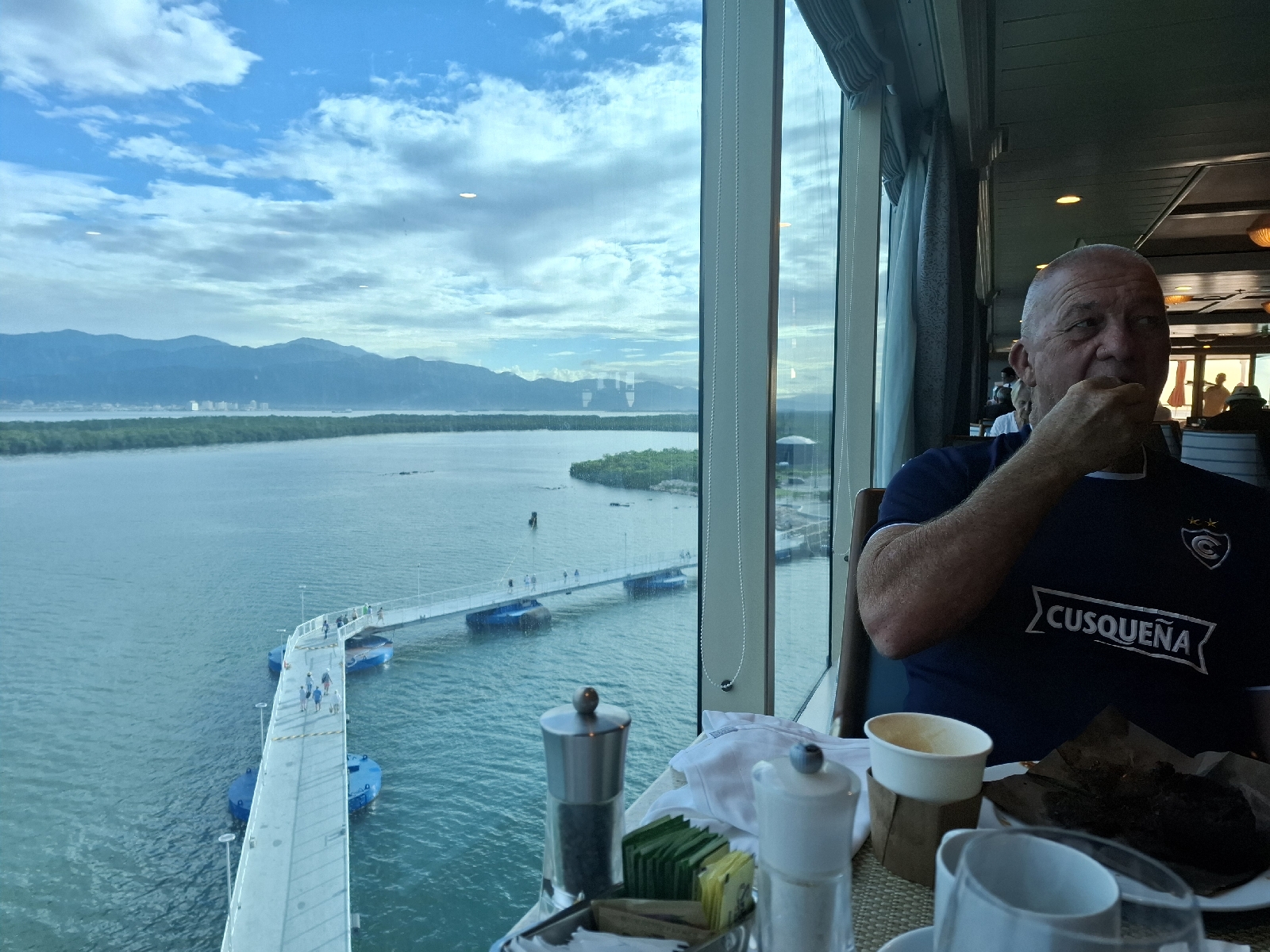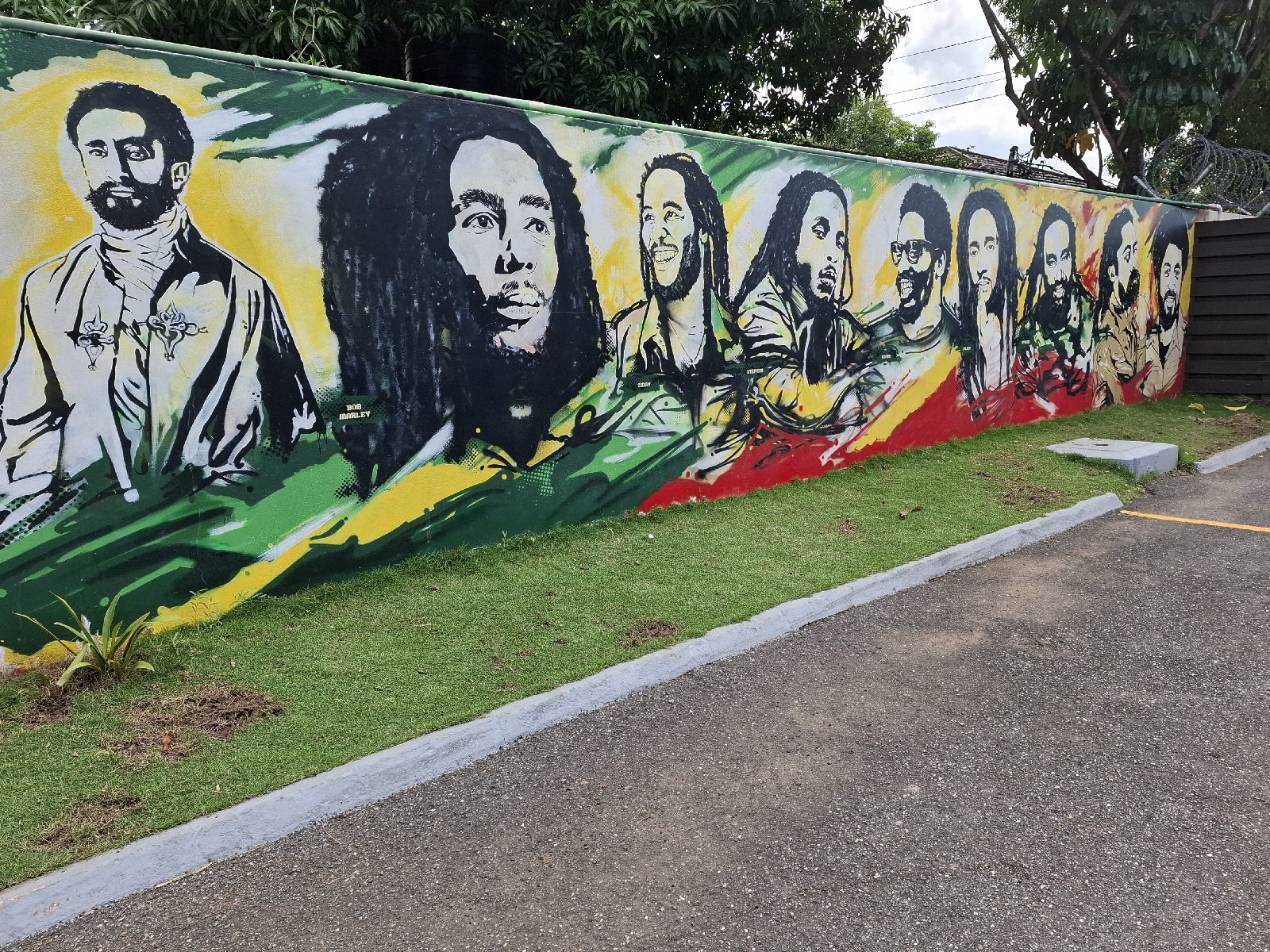We docked in Port Royal, Jamaica and walked down to find a taxi. Above is Victoria peer, the 7th biggest natural harbour in the world. Jamaica's motto is 'Out of many, one people'.
Owen Clark was our guide. In Jamaica there seems to be strict rules over who can drive you to places and they are conscious of tourists, where they go, what they can do and that they get back on the ships.
He was very knowledgeable and gave us much information on Jamaica. Drove us to Kingston to see the Bob Marley museum, wow.
We passed the best ice cream shop in the world situated in the largest house of Kingston, Devon House, that has been turned into shops.
Owen took us to various monuments.
The Bob Marley museum is situated on the site of the legendary musician’s home, which he purchased in 1975. This house, featuring 19th-century architecture, was Marley’s home until his transition in 1981. It was converted into a museum six years later by his wife, Mrs Rita Marley. The main museum displays Marley’s personal treasures.
The property also features a well-equipped 80-seat theatre, a photographic gallery, a record shop and a gift shop filled with a wide array of Bob Marley memorabilia.
The story goes that Port Royal was once called “the most wicked and sinful city in the world” it was famous the world over for its booze—the blackout-inducing Kill Devil Rum, its pirates, and its sex workers. Needless to say, when the city was nearly destroyed, there were some parties that saw it as a convenient solution to an ugly problem.
The English and their pirate friends were relatively new to the area. Jamaica had been held by the Spanish since Columbus first declared it “the fairest island eyes have beheld” in 1494. Lacking gold or other obvious exploitable wealth, the Spanish held it but did not focus much energy there. It came under English power in 1655, after Cromwell sent English raiders to invade and capture the Spanish stronghold at Hispaniola (now Haiti and Dominican Republic, then the center of Spanish trade in the Caribbean). Cromwell’s men failed spectacularly at taking Hispaniola and turned to Jamaica as a second choice, better-than-nothing option.
Located on the southeast coast of Jamaica, the natural harbor at Port Royal became the center of English life in Jamaica. By the late 1600s it had become one of the largest European cities in the new world, second only to Boston. It had also become the infamous home of pirates, sex workers, and Englishmen on the make. Far from home, they made their livings off of the slave trade, slave labor in plantations, and the money that the pirates brought in from their looting forays against the Spanish.
It may be seen as an indicator of the caliber of vice in Port Royal that in 1675 the notorious pirate Henry Morgan became the Lieutenant Governor. In fact, Morgan began to crack down on overt piracy as the grand era of privateering he had been part of, began to enter its waning phase. He died just four years before the earthquake struck and was buried in the Palisadoes cemetery.
On the morning of June 7, 1692, a massive earthquake estimated at a 7.5 magnitude hit the island. The city, largely built over sand, suffered instantly from liquifaction, with buildings, roads, and citizens sucked into the ground. Geysers erupted from the earth, buildings collapsed, and finally the city was hit by tsunami waves, dragging what had not been destroyed out to sea. In the end, some 33 acres of the city disappeared under water, four of the five forts were destroyed or submerged, and 2000 people were killed. The cemetery where Captain Morgan was buried slipped into the sea, its bodies floating up to mix with the freshly dead.
Even before the earth stopped shaking, locals reported that the looting began, one writing: “Immediately upon the cessation of the extremity of the earthquake, your heart would abhor to hear of the depredations, robberies and violence that were in an instant committed upon the place by the vilest and basest of the people; no man could call any thing his own, for they that were the strongest and most wicked seized what they pleased....”
As news spread of the destruction of Port Royal, it was picked up as a cautionary tale and a sure sign of divine retribution for the lewd behavior of the pirates and sex workers, the pretensions and wealth of the gentry of the town, or the sins of slavery, depending on the city and the audience.
But at any rate, the earthquake did not end Port Royal’s wicked ways, nor its relationship with vice or with pirates who continued to stop by for another 50 years while they preyed on Spanish ships. In fact, in 1720, John “Calico Jack” Rackham was hanged at Gallows-Point in Port Royal by order of pirate hunter—and former privateer—Woodes Rogers (best known for his rescue of the castaway Alexander Selkirk, the inspiration for Robinson Crusoe).
Since then the city has been racked by fire, earthquake, and hurricane several times. The English finally decided to close its naval station at Port Royal, effectively closing it for business, and most residents left. In 1951, what was left of Port Royal was hit by Hurricane Charlie, destroying more property and leaving only a few of the original buildings standing.

















No comments:
Post a Comment